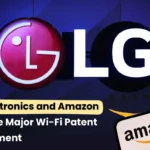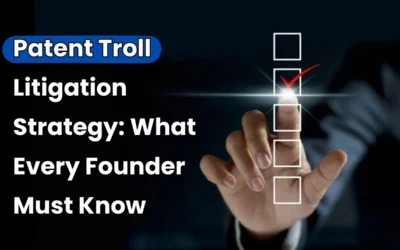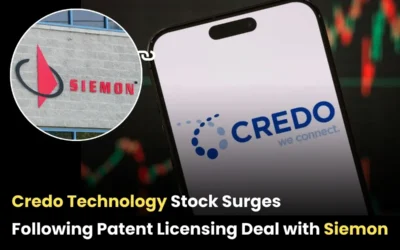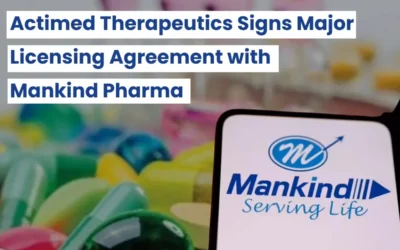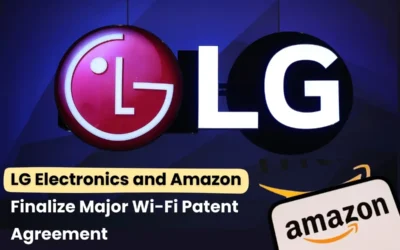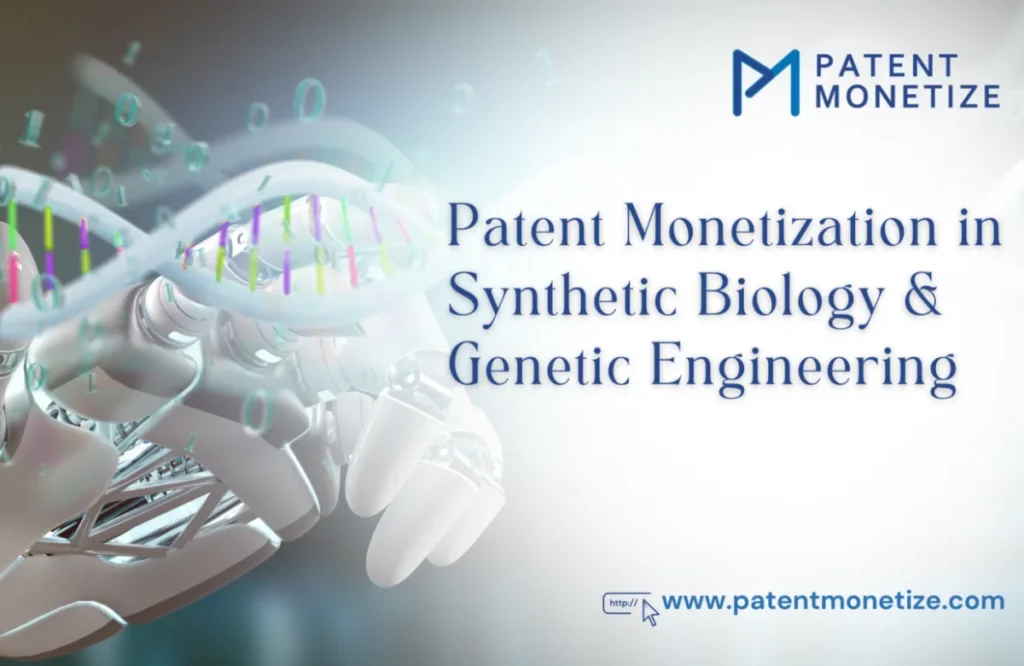
Synthetic biology and genetic engineering are new industries from pharma and agro to biofuels and bio-based chemicals. With advancements breaking boundaries, patents become an asset, making revolutionary biological breakthroughs possible and allowing companies to reap revenues in the form of licensing, sales, and collaborations. Effective patent monetization in synthetic biology and genetic engineering has the potential to unlock R&D, propel company valuations and catalyse commercial adoption of new technology.
The Value of Patents in Synthetic Biology & Genetic Engineering
1. Protection of Novel Biological Constructs
Patents protect synthetic DNA sequences, GMOs, biosynthetic pathways, and human-made enzymes in such a way that inventors are motivated to innovate.
2. Market Exclusivity
Patents provide sole ownership to the inventor and restrict others from selling substitute technology. This benefits start-ups and established companies both to promote R&D investment and determine market leadership.
3. Licensing Revenue
Firms license biotech patented under patent to third parties for the purpose of earning royalties and generating continuous cash flows. It is extremely prevalent in biopharmaceuticals, industrial enzymes, and biotech agriculture.
4. Attracting Investors
Patent portfolios value synthetic biology start-ups, along with the interest of venture capital houses and corporate investors.
Key Areas of Patent Monetization in Synthetic Biology & Genetic Engineering
1. Gene Editing Tools
Most in demand to patent is gene editing technology, and CRISPR-Cas9, TALENs (Transcription Activator-Like Effector Nucleases), ZFNs (Zinc Finger Nucleases), and base editing platforms are among the frontrunners. They make it possible for extremely specific changes in DNA, and gene therapies, disease-resistant crops, and genetic research tools are all up for grabs to make. Edits Medicine, Italia Therapeutics, and CRISPR Therapeutics are among a number of others to build end-to-end business models based on patenting and licensing the technology.
2. Engineered Microorganisms
These patents involve microorganisms that are genetically engineered like bacteria, yeast, and algae for a number of purposes, like:
- Biofuel production (e.g., algal biodiesel)
- Industrial biochemical (e.g., bioplastics and solvents)
- Waste treatment and environmental bioremediation
- High-value microbial drugs (e.g., monoclonal antibodies and insulin)
3. Synthetic DNA Sequences and Genetic Circuits
Patents are typically written on gene sequence unique orders, synthesised synthetic DNA, and gene programming for cellular function control. They offer packets of synthetically manufactured bio-manufacture, vaccine manufacturing, and cell therapy.
4. Biosynthetic Pathways
It is a patented metabolic engineering step process for enabling microbes to generate:
- Fragrance and flavour compounds from fruits (e.g., patchouli oil and vanillin)
- Vitamins and nutrients
- Drug chemistry (e.g., artemisinin for pharmaceutical antimalarial applications)
- Future renewable chemicals (e.g., isoprene to make rubber off a bio-platform)
5. Cell-Free Systems
Cell-free protein synthesis platforms and cell-free metabolic systems have thus arisen, leading to patents for safeguarding the invention of preventing the use of living cells in bioproduction. The platforms facilitate increased drug discovery, biomarker detection, and on-demand manufacturing of biologics.
6. Protein Engineering
Protein design and optimization patent applications are all aimed at the development of more efficient enzymes, therapeutic proteins, and antibodies with improved specificity. Major applications are:
- Biopharmaceuticals (for example, biosimilars and monoclonal antibodies)
- Industrial enzymes (for instance, laundry detergent and biofuels)
- Food processing enzymes
7. Biomaterials and Biofabrication
Synthetic biology and materials science intersect in the production of nature-inspired materials like:
- Spider silk analogues to produce high-strength, low-weight fibres
- Bioplastics for biodegradable, green packaging
- 3D-printed organs and constructed tissues
- Wound-healing biomaterials are patented as the company desires long-term production schedules.
8. Agricultural Biotechnology
Patents for GM crops include:
- Drought-resistant crops
- Pest-resistant crops
- Nutritional improvement (e.g., vitamin A rice)
- Gene-edited animals for disease resistance and yield
Monsanto (Bayer) and Cordova Agriscience lead farm biotech patent filings.
9. Synthetic Biology Platforms
Ginkgo BioWorks and Zymogen have patented robot-run biofoundries, computer-aided design, and high-throughput strain development platforms. The platforms speed up the biological engineering of processes in microbes and protein design for humans.
10. Diagnostic Biosensors
Increasingly, biosensors using biological entities are being patented. The biosensors respond to:
- Pathogens
- Environmental toxins
- Disease biomarkers at the time of diagnosis Synthetic biosensors developed biologically make diagnostic equipment portable, point-of-care diagnostics, and real-time diagnosis revolutionary.
11. Immunotherapy and Cell Therapy
Lead-value patents include T-cell receptor (TCR) therapy, CAR-T cell therapy, and gene-edited immune cells for the treatment of genetic diseases and cancer. Personalized medicine is creating a record number of patent applications in this field.
12. RNA Technologies
RNA technology such as mRNA vaccines and RNA therapeutics is witnessing increased filing of patents. Interestingly, the COVID-19 vaccines by Moderna and BioNTech incorporate mRNA platform patents.
13. CRISPR Diagnostics
In addition to gene editing, CRISPR diagnostics also leverage the specific detection capability of the CA’s enzyme to detect infectious disease and gene mutation. SHERLOCK and DETECTR platforms fall under this patented category.
14. Antimicrobial and Synthetic Antibiotics
Synthetic antimicrobial peptides synthesized, bacteriophage therapy, and biosynthetic antibiotics against antibiotic-resistant bacteria are patented as a countermove of emerging resistance against antibiotics.
15. Synthetic Virology
Synthetic virus platforms as a vaccine technology platform and viral vector gene therapy platform are patented. Synthetic virology enables industries to design new delivery systems for new vaccine technologies, which are safer and more efficient than existing ones.
16. Biosecurity and Containment Systems
Synthetic biology is raising the biosafety issue; therefore, genetic kill switches, biocontainment devices, and gene circuit-controlled organism survival in the outside laboratory, patents.
17. Artificial Cells and Minimal Genomes
Patents on artificial cells and synthetic minimal genomes were drawn up after research into genetically engineered minimal genetic code cells for pharmaceutical and industrial uses.
Strategies for Monetizing Patents
1. Licensing Agreements
- Exclusive Licensing: Sole license in a given territory or sector to one licensee.
- Non-Exclusive Licensing: Bestowing the innovation on multiple firms, with extension and income pending.
- Cross-Licensing: Patent licensing to other biotech companies in a quest for securing wider market reach and infringement lawsuit evasion.
2. Patent Sales
patent sales of peripherals to other players in the biotechnology value chain that are able to deploy readily available funds into use with a potential for the company to concentrate on core inventions.
3. Collaborative R&D Partnerships
Collaborative R&D arrangements with pharma giants, chemical multinationals, or agribusiness cartels are able to redirect patent licensing into joint product R&D programmes.
4. Spin-Out Ventures
Companies can spin out patented technology into start-ups and generate money, stimulate commercialisation and have board membership of the spin-out start-ups.
Real-World Examples
- CRISPR Licensing Battles: Broad Institute and University of California fought highly publicised patent battles for CRISPR technology and received multi-million-dollar R&D licenses.
- Amyris Inc.: Commercialized its synthetic biology patents by granting fragrance-producing biosynthetic routes on a fee-for-license basis to multinational consumer goods firms.
- Ginkgo Bioworks: Built a patent business model platform in synthetic biology by collaborating with pharma, age, and industrial partners.
Challenges in Patent Monetization
- Patentability Concern: Patents on naturally evolved DNA or organisms are restricted in some countries.
- Complex Licensing Frameworks: Gene-editing technologies pyramid upon patents and also result in litigation and complex licensing.
- Rapid Technological Advancements: Technologies such as CRISPR advance at a rapid pace and thus ongoing portfolio management and patenting.
Future Trends
- Expansion of Synthetic Biology Applications: Bio manufacturing, customized medicine, and regenerative farming will keep creating more and more demand for biotechnological patent goods.
- Increased Collaboration: Helper witness the synthetic biology start-ups joining forces with the major pharm conglomerates to guide and push licensing transactions.
- Global Licensing Opportunities: The Third World will provide future opportunities for licensing with the utilization of genes engineering technologies for food, health, and the environment.
Conclusion
Synthetic biology patents and gene engineering patents are wonderful tools for market domination, innovation, and the establishment of monetization streams. Organizations that are adept at managing their patent assets and making them available for license are certain to determine the biotech destiny.




